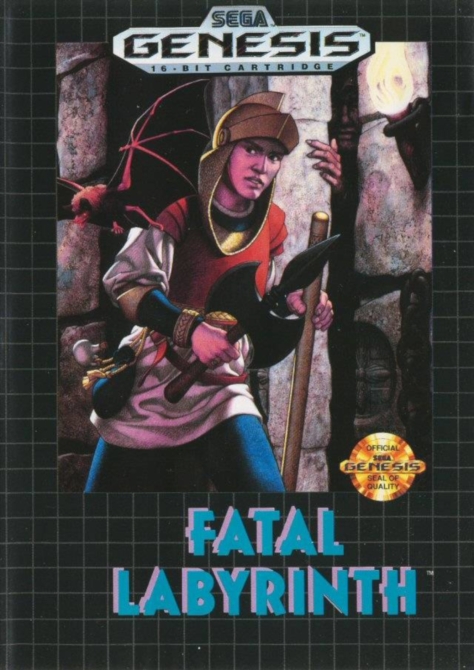
One of more than 50 games included in the Sega Genesis Classics compilation, Fatal Labyrinth is unique among its brethren. It is the only roguelike dungeon crawler with role-playing mechanics, and clocking in at only a few hours, it was just what I needed to fill the gaps between other games. Its narrow focus left me wanting, however.
Originally available in Japan beginning November 19, 1990, it was one of the few games released for the Sega Meganet, an early online service exclusive to Japan. About a year later, Sega published Fatal Labyrinth in the United States, on August 21, 1991 for the Genesis. Developed internally at Sega with a staff of about a half-dozen individuals, luminaries such as Hirokazu Yasuhara and Naoto Ohshima collaborated together on this title before going on to co-create Sonic the Hedgehog with Yuji Naka.
It’s been a while since I’ve played a roguelike game such as this, so I enjoyed having to adapt to the formalities of the gameplay. Although it didn’t have the appearance of a typical turn-based RPG, Fatal Labyrinth’s gameplay strictly adhered to turns. With each step I took, the monsters populating the floor I was on also got to move. If I walked into an enemy and attacked them, they got to attack as well. In this sense, the “automatic” combat was quite similar to that of Ys: The Vanished Omens. Whether the hero Trykaar actually hit the enemy, well that was another matter…

As I explored the dungeon, I found an assortment of weapons and armor to bolster Trykaar’s strength and defensive abilities. When first picked up, the effects and stats of items and gear were unknown. Only when used would I know that a Red Potion was actually a Healing Potion. Of course, since I used the Red Potion, I’d have to wait until I picked up another one to definitively know its effects. Cursed gear was the worst, since it damaged Trykaar, and I couldn’t remove it without a rare item. These factors were alleviated by this version’s oft-used rewind feature, an absolute blessing. Another standout inclusion was the ability to save my progress, and not have to complete the game in a single sitting.
The thirty floors that made up Fatal Labyrinth’s dungeon were selected in a random order on each playthrough, save for the last few. Additionally, the layout of items and composition of enemies differed as well. As a result, for all intents and purposes no two playthroughs were the same. And, seeing as how the game only takes a few hours to complete, it would seem like a prime candidate for multiple playthroughs. Personally though, I found the game to be a little thin on variety. So while I enjoyed my playthrough, it’ll probably be the only one.

The roguelike subgenre is one I haven’t had much experience with. Consequently, learning the mechanics that made Fatal Labyrinth function was an enlightening process. Of note was level of strategy in each step I took. Most of the time the path I chose was irrelevant, but when I was getting swarmed by enemies, every step counted. The game’s brevity, while just what I was searching for, also meant it had an extremely narrow focus: conquering a single dungeon. I’m interested to explore more examples of the subgenre, specifically ones with more fleshed out storylines, environments, and character advancement. As it stands, Fatal Labyrinth was an enjoyable appetizer; tasty, but not filling.
